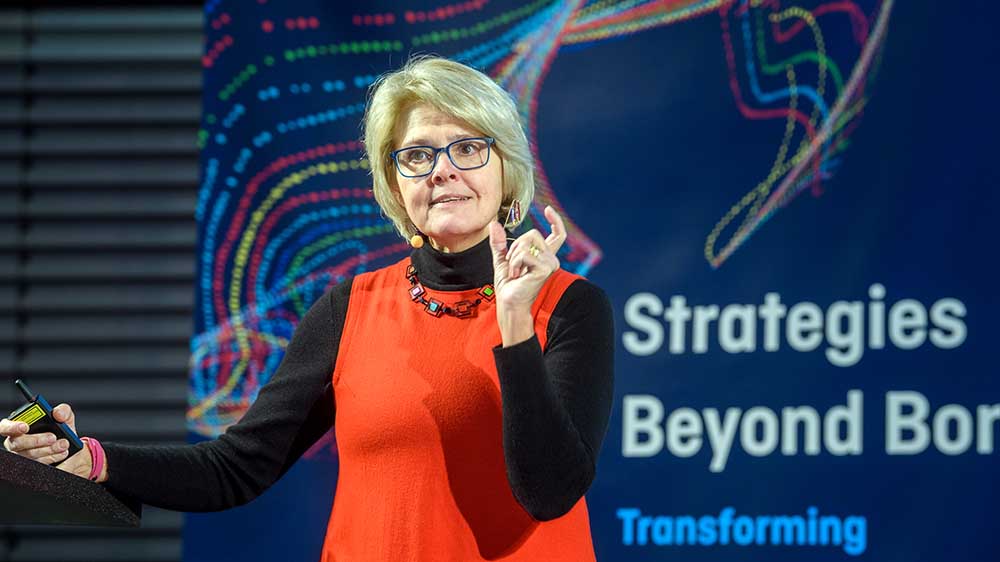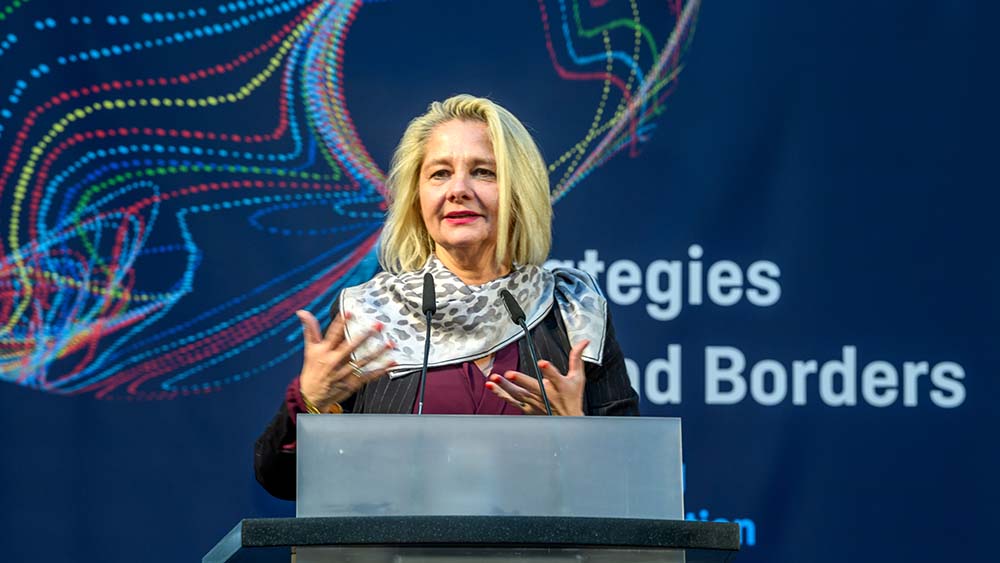Universities’ Strategic Steps toward Digital Transformation
 Peter Himsel
Peter Himsel
Global exchange about digitalisation at universities at the international “Strategies beyond borders conference” 2019. DAAD’s next conference on digitalization is planned for October 2020
In an interview, Prof. Dr. Ada Pellert and Dr. Susan Grajek discuss digitalization strategies for universities and how to approach a process that affects all levels of an institution. Both experts were keynote speakers at the international conference “Strategies Beyond Borders: Transforming Higher Education in a Digital Age,” which the DAAD organized together with Hochschulforum Digitalisierung (HFD) in December 2019.
Professor Pellert, what steps does a German college take on the road to their own digitalization strategy?
At the very beginning, a university-wide understanding of digitalization is needed – i.e. an understanding of what it means for the individual areas of teaching, research and administration. Only then, partial strategies can be merged into an overall strategy. Said understanding within and between the areas of teaching, research and administration must be taken seriously, since it is not necessarily clear that digitalization processes can only be faced successfully by a university if all levels of the institution cooperate. During the implementation phase, special attention must be paid to providing good support structures and to developing the (digital) skills of all members of the university.
Dr. Grajek, what makes change management effective and successful within higher education institutions?
It’s important to have a theory of change. A theory of change is simply a clear vision for the end state you’re trying to achieve combined with a sense of the levers that will create and accelerate change. In this digital age, digital transformation is becoming a core component of the work of change and thus we need to identify the digital levers that will lead to change, as well as the culture and workforce changes that need to support digital transformation.

Peter Himsel
Dr. Susan Grajek: The EDUCAUSE’s Vice President spent many years in leadership positions at Yale University
Dr. Grajek, you identified four “Grand Challenges,” or common priorities, for American university leadership: student success, financial health, reputation and relevance, and external competition. Can you describe the role of digital transformation in addressing these?
While a Grand Challenge stipulates the end goal, a Grand Strategy describes how the end goal will be achieved. I suggest two potential Grand Strategies for digital transformation: Simplification and Innovation.
Simplification may be the more appropriate strategy to achieve financial health or student success because it helps an institution focus on simplifying (and reducing the cost of) operations and processes and on simplifying (and improving the usability of) end-user experiences. A Grand Strategy of Simplification might lead a university to focus on enterprise architecture, process redesign and management, user-centered design, AI and the Internet of Things (IoT) to automate manual operations, product management, personalization, continuous improvement, service management, cloud and shared services, the use of data and analytics for making decisions, and institution-wide strategic planning, procurement, IT and data governance.
Innovation would be a good Grand Strategy to address reputation and relevant, external competition or, again, student success. An institution pursuing a Grand Strategy of Innovation might emphasize the use of data and analytics for making decisions, adapting faculty roles to support student success and new technologies, helping researchers apply new digital research methods and collaborate more, adopting emerging technologies (such as extended reality (XR), robotics, blockchain, IoT, and machine learning), integrating and expanding institutional research services, creating new leadership roles in new areas (such as Chief Innovation Officer or Chief Learning Officer), and deploying rich artificial intelligence (AI), data and interface platforms for student success and administration.
The specifics will vary from university to university.
Professor Pellert, what role does the university’s management play in the process of developing a digitalization strategy?
As always, the management has the important role of setting an example. And at universities management takes place on many levels: among colleagues in boards and committees, in research and teaching projects, or as institutional management carried out by designated executive positions. Serious reflection on the topic of digitalization must take place at all of these levels. Thus, a university signals that it is aware of its responsibility in view of this major transformation in society and it acknowledges that everyone – including the management – can and must learn new things. Last but not least, it is a way of directly shaping this transformation, rather than just “enduring” it.

Peter Himsel
Prof. Dr. Ada Pellert: The president of the FernUniversität in Hagen is also a member of the German government’s Digital Council
Professor Pellert, if you could make a “digital” wish for Germany’s higher education institutions, what would it be?
I would wish that the rather one-dimensional debate on classroom teaching (e.g. as always being character forming) versus digital teaching (e.g. as always being impersonal) could be replaced by a more differentiated discussion; one that emphasizes that blended learning, in particular, offers the possibility of enhancing the quality of teaching – that is, if we carefully consider what content needs to be conveyed, and in what form. Of course, this will also expose certain political assumptions as being unrealistic – for instance, the notion that good teaching and learning will come cheaper as a result of digitalization.
(20 March 2020)
Profile
Prof. Dr. Ada Pellert has been serving as president of the FernUniversität in Hagen since March 2016. Since September 2016 she has chaired the board of the cooperative platform Digitale Hochschule NRW (DH.NRW) and, since August 2018, is a member of the German government’s Digital Council. As an economist, she previously held management posts at various universities in German-speaking countries and served as a professor for organizational development and educational management.
Vita
Dr. Susan Grajek is EDUCAUSE’s Vice President for Communities and Research. Before joining EDUCAUSE, she spent over 25 years at Yale University in a variety of IT management and leadership positions at the university, which encompassed academic computing, IT support, communications, assessment, strategic planning, and relationship management.
Save the date
The discussion about the digital transformation and its impact on teaching and learning, student and staff mobility as well as international cooperation will be taken up at the DAAD’s next conference: “Moving target digitalisation: Re-thinking global exchange in higher education.” Being held during the German presidency of the EU Council, the conference takes place at the University of Potsdam (Campus Griebnitzsee) on October 5–6, 2020.